Stator Diagram
LK Die Casting Machine / 2024-10-16 11:21:39
Stator Diagram
2024-10-16 by Cherry
Introduction
In modern industrial production, die-casting machines, as
an important metal forming equipment is widely used to
produce various complex shapes and high-precision metal
parts. It is used in many fields such as automobiles,
electronics, aerospace, etc.
With the continuous advancement of technology, the requirements
for key technologies and components in the field of die-casting
machines are getting higher and higher, and the concept and
application of "stator diagram" has gradually become the
focus of attention in the industry.
As a tool and method for motor design, stator diagrams can
effectively improve the performance and efficiency of
die casting machines, help manufacturers optimize production
processes and improve product quality.
The stator diagram plays an indispensable role in the design,
manufacturing, operation, and maintenance of die-casting machines.
It is not just a drawing, but also a carrier containing rich
technical information and engineering wisdom. For practitioners
in the die-casting machine industry, being familiar with
and mastering the application of stator diagrams in the field of
die casting machines are the key to improving work efficiency,
ensuring product quality and promoting the development of the
industry.
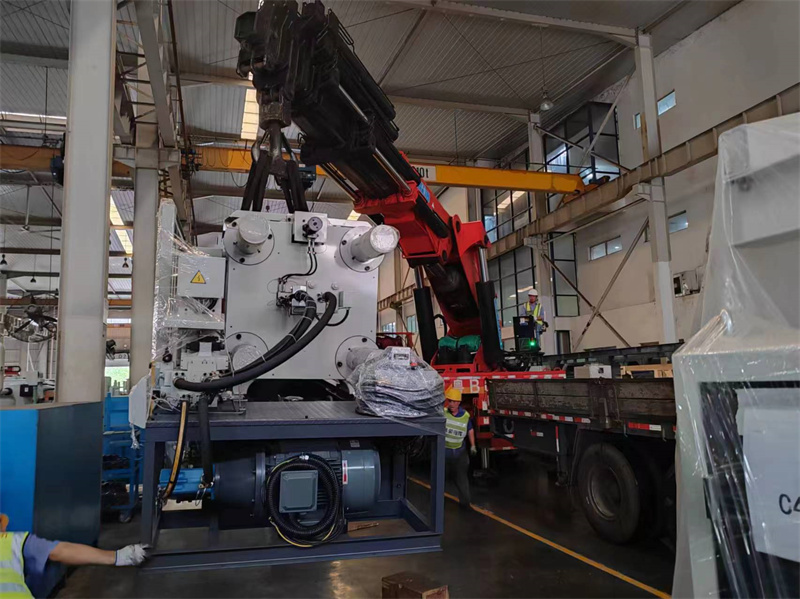
This article will deeply explore the various applications of
stator diagram in the field of die-casting machines, as well
as its impact and value, hoping to provide a useful reference
and inspiration for professionals in related fields.
Overview of stator diagram
The stator diagram, originating from the field of motor design,
refers to a technical diagram used to analyze the structure of
the motor stator winding and its electromagnetic properties.
It is an engineering drawing used to describe the stator
structure and related parameters in detail.
As an important component in a motor or other rotating equipment,
the stator is responsible for generating an electromagnetic
field, working with the rotor to drive the motor to rotate.
The rationality and accuracy of its structure directly affect
the performance and operating stability of the equipment.
Through the stator diagram, the design of the stator winding,
the magnetic field distribution and the current flow can
be effectively analyzed to optimize the performance of the
motor.
In a die-casting machine, the stator is usually connected to
the motor to provide power support for the operation of the
die-casting machine. The stator diagram generally includes
key information such as the stator's overall dimensions, core
structure, winding distribution, slot shape and size, and
wiring method. Through the stator diagram, engineers can
clearly understand the design requirements and interrelationships
of the various parts of the stator, to carry out accurate
manufacturing and assembly.
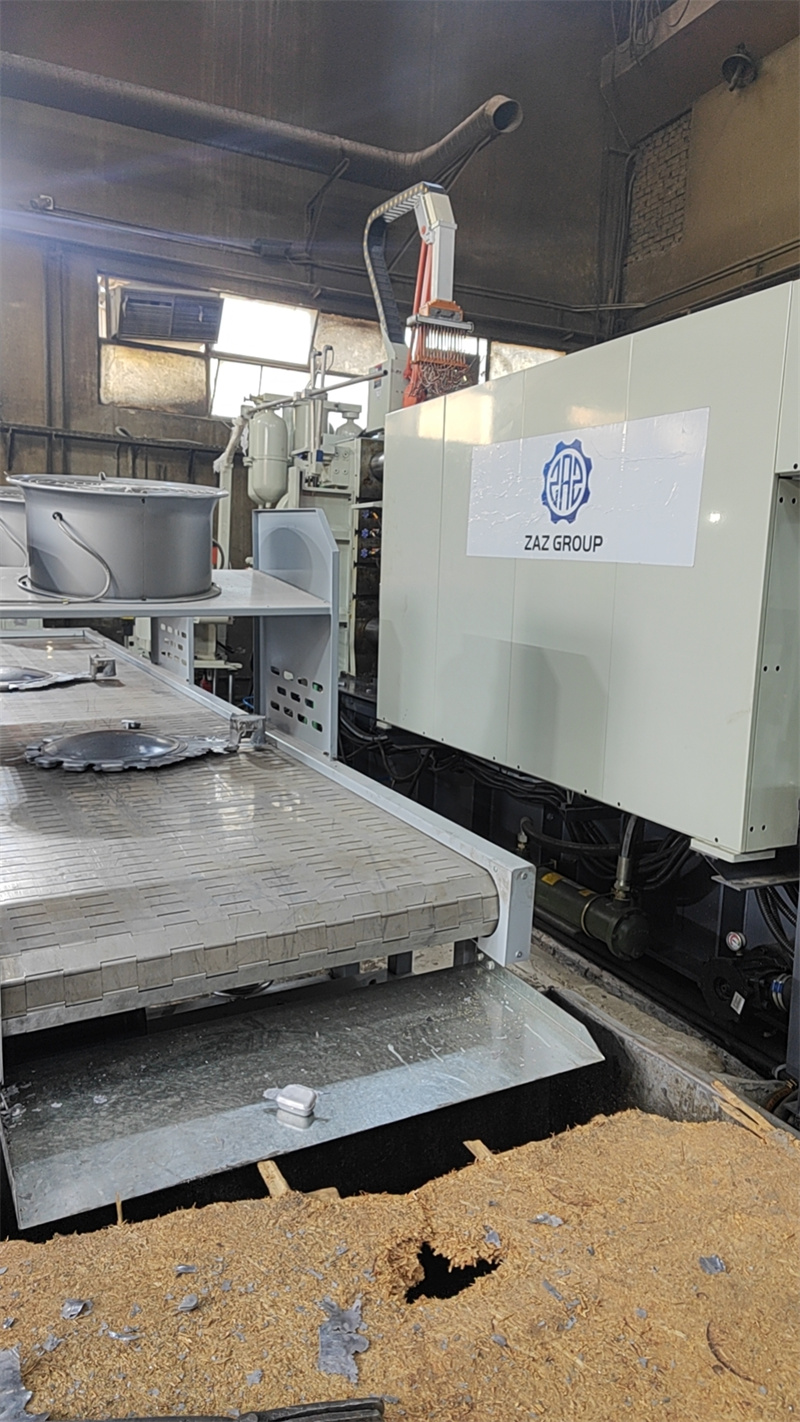
In the field of die-casting machines, the concept of stator
diagram is not limited to traditional motor design, but can
be widely used in motor-driven die-casting equipment.
Through the design and optimization of the stator diagram,
the power system, precision control, and efficiency of the
die-casting machine have been significantly improved.
Working principle of die-casting machine and the role of
stator
Working principle of die-casting machine
The working principle of the die-casting machine is to
quickly inject molten metal liquid into the mold cavity
under high pressure, so that it solidifies and forms under
pressure, thereby obtaining castings of the required
shape and size.
It is mainly composed of a mold clamping mechanism, injection
mechanism, hydraulic system, electrical control system
and other parts. During the entire working process,
various parts need to work together to accurately control
various parameters such as pressure, speed, temperature,
etc. to ensure the smooth progress of the die-casting
process and the stability of the casting quality.
The role of stator in die-casting machine
The main role of the stator in the die-casting machine is
to generate a rotating magnetic field through interaction
with the rotor, drive the motor to operate, and then provide
power for the injection mechanism and the clamping mechanism.
Its stable performance and precise power output are essential
for the normal operation of the die-casting machine.
If there is a problem with the stator, such as winding short
circuit, core damage, etc., the motor may not work properly,
affecting the production efficiency and casting quality of
the die-casting machine, and even causing equipment shutdown,
causing economic losses to the company.
Therefore, the quality and performance of the stator play a
pivotal role in the die-casting machine, and the stator diagram
is an important basis for ensuring the quality and performance
of the stator.
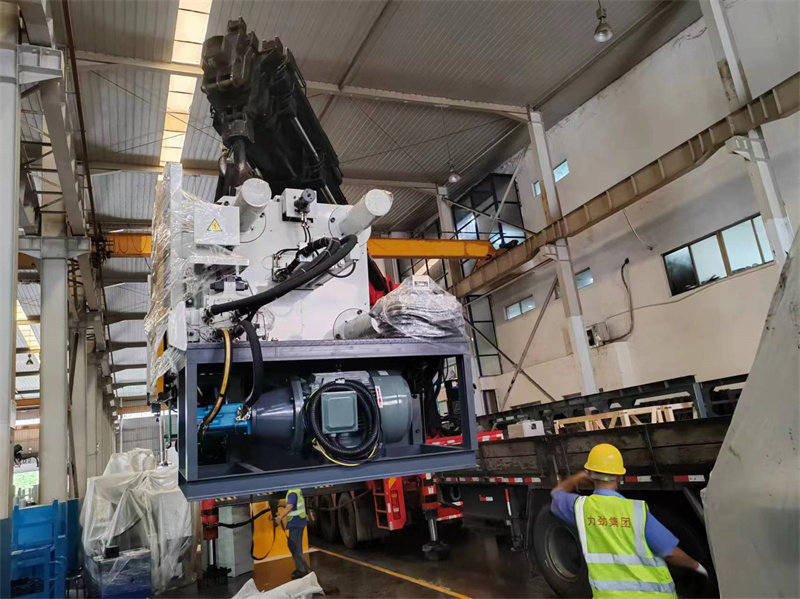
Application of stator diagram in die-casting machine design
1. Structural design optimization
In the design stage of the die-casting machine, the stator
diagram provides engineers with detailed stator structure
information to help them optimize the reasonable structural
design.
Through the analysis and research of the core shape, slot
layout, winding method, etc. in the stator diagram, engineers
can optimize the stator structure as much as possible while
meeting the motor performance requirements, improving its
space utilization and heat dissipation performance.
For example, the reasonable design of the shape and size
of the core can reduce the magnetic circuit loss and
improve the efficiency of the motor; optimize the layout
and the size of the slot can make the winding more evenly
distributed, reduce the heating and resistance loss of the
winding, and also help to improve the power density of
the motor.
In addition, the wiring method in the stator diagram will
also affect the electrical performance and control method
of the motor. Engineers need to select the appropriate
wiring method according to the actual working requirements
of the die-casting machine to ensure stable operation
and precise control of the motor.
2. Parameter matching and calculation
Various parameters in the stator diagram, such as the
number of winding turns, wire diameter, core material
characteristics, etc., are important bases for motor
parameter matching and calculation.
When designing a die-casting machine, engineers need to
select and calculate the parameters of the motor based on
the working load, operating speed, pressure requirements
and other parameters of the die-casting machine, combined
with the relevant information in the stator diagram.
Through accurate calculation and reasonable parameter matching,
it can be ensured that the motor can provide sufficient torque
and power during the working process of the die-casting machine
to meet the various working conditions of the die-casting machine.
At the same time, factors such as the motor's starting performance,
overload capacity, and speed regulation range need to be considered
to ensure that the die-casting machine can operate stably under
different working conditions.
For example, when calculating the number of turns and wire
diameter of the winding, it is necessary to consider the
rated voltage, current, power factor, and other parameters
of the motor, as well as the heat dissipation conditions
and insulation requirements of the winding. Through reasonable
calculation and selection, it is ensured that the winding can
withstand the impact of the working current and will not be
damaged by overheating during operation.
3. Collaborative design and system integration
The die-casting machine is a complex mechatronics system.
The stator needs to be collaboratively designed and the system
integrated with other components as a key component.
The stator diagram plays an important bridging role in this
process. It transmits the design requirements and parameter
information of the stator to the designers of other related
components, so that the entire die-casting machine system can
achieve seamless docking and efficient collaborative work.
For example, when designing a hydraulic system, it is
necessary to consider the power and speed of the motor to
determine the displacement and working pressure of the
oil pump; when designing an electrical control system, it
is necessary to select appropriate controllers and sensors
according to the winding connection method of the stator
and the control requirements of the motor to achieve precise
control and monitoring of the motor.
Through the collaborative effect of the stator diagram,
problems such as parameter mismatch and interface inconsistency
between various components can be avoided during the design
process, and the overall performance and reliability of
the die-casting machine system can be improved.
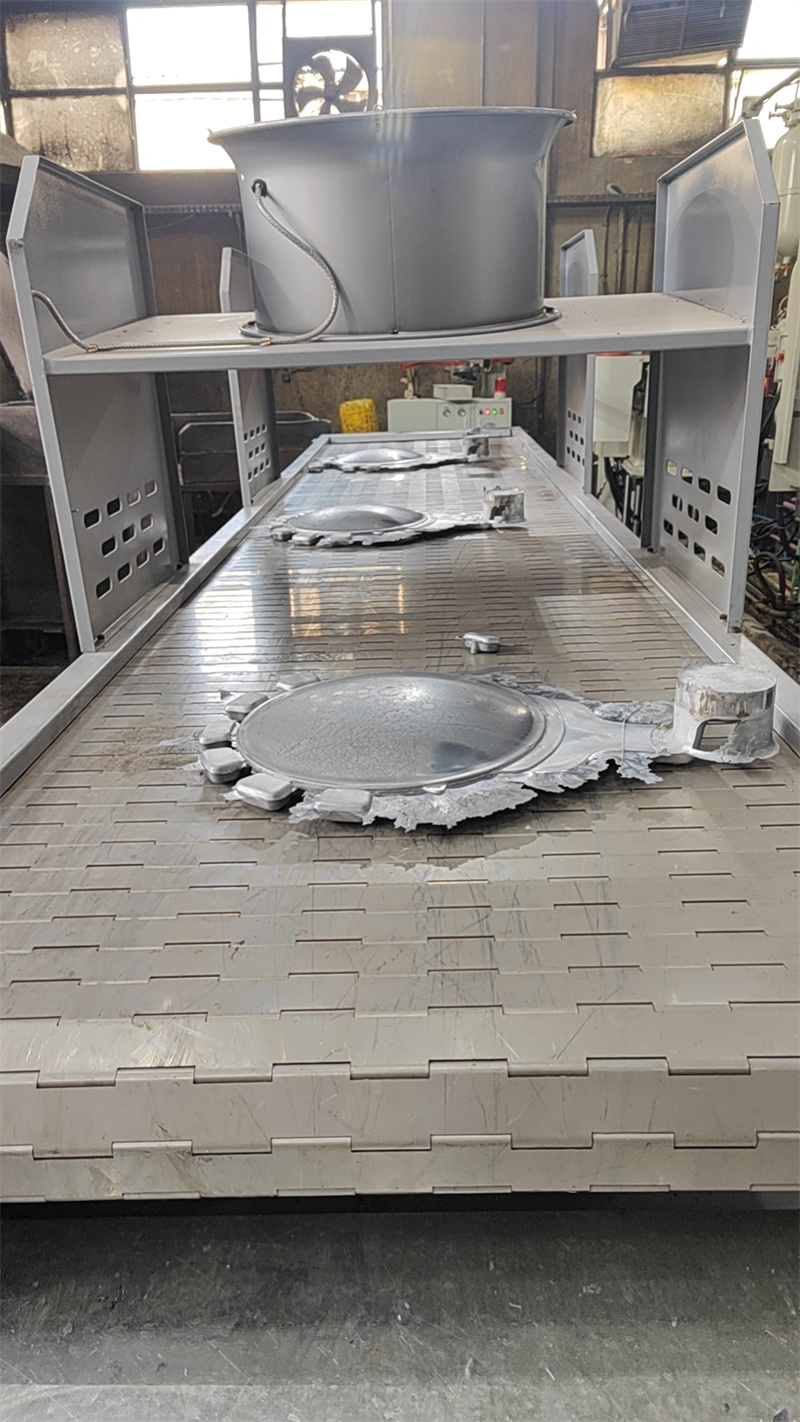
Application of stator diagram in die-casting machine
manufacturing
1. Processing process guidance
The stator diagram provides a detailed processing process
guidance for the manufacturing process of the die-casting
machine stator. When manufacturing the stator core, it
is necessary to select appropriate processing methods and
process parameters, such as stamping, cutting, grinding,
etc., according to the core shape and size requirements in
the stator diagram.
At the same time, it is also necessary to strictly control
the processing accuracy and surface quality of the core
to ensure the magnetic properties and assembly accuracy
of the core. During the winding production process, the
stator diagram specifies the number of turns, wire diameter,
winding method and other process requirements of the
winding.
Workers need to perform precise winding and wiring operations
according to the requirements of the drawings to ensure that
the electrical performance and insulation performance of
the winding meets the standards.
In addition, the stator diagram will also provide detailed
instructions for the assembly process of the stator, including
the assembly sequence, tightening torque, matching tolerance
and other requirements of each component. Workers must
strictly follow the requirements of the drawings during
the assembly process to ensure the overall quality and performance
of the stator.
2. Improve the driving force of the die-casting machine
During operation, the die-casting machine needs to inject
molten metal into the mold. The power of the drive system
directly determines the efficiency of the die-casting machine
and the quality of the finished product.
Traditional die-casting machines are mostly driven by hydraulic
systems, while modern electric die-casting machines are
driven by electric motors. The optimized design of the stator
diagram can significantly improve the driving force of the
motor.
By analyzing the magnetic field distribution and current
flow path of the stator winding, engineers can design more
efficient motors, thereby improving the output power and
production efficiency of the die-casting machine.
3. Enhance the precision control of the die-casting machine
During the die-casting machine's molding process, the die-casting
force's control accuracy and injection speed are crucial.
The application of the stator diagram makes the motor respond
faster and the control more accurately.
In the electric system of modern die-casting machines, the
stator diagram not only optimizes the magnetic field distribution
of the motor, but also can reduce electromagnetic interference
and fluctuations by accurately controlling the current,
thereby achieving more stable die-casting force control.
This is especially important for die-casting parts with complex
shapes and high precision.
4. Improve the energy efficiency of the die-casting machine
Energy efficiency is one of the important indicators that
die-casting machine manufacturers pay attention to. The
application of stator diagrams helps to optimize the design
of motors and reduce energy consumption.
During the operation of the motor, the uneven distribution
of current and magnetic field in the winding will lead to
energy loss. Through the analysis of the stator diagram, a
uniform magnetic field distribution can be accurately
designed to reduce the energy loss of the motor and improve
the overall energy utilization rate. This not only helps
to reduce production costs but also conforms to the current
trend of green manufacturing.
5. Extend the service life of equipment
Die-casting machines usually operate under high-intensity
and high load, which challenges the durability of the equipment.
The optimized design of the stator diagram can not only
improve the efficiency of the motor, but also reduce the
heating and electromagnetic interference of the winding,
reduce mechanical wear, and thus extend the service life
of the die-casting machine.
The reasonable design of the stator enables the motor to
work stably under long-term high load, reduce the failure
rate and maintenance cost, and improve the overall reliability
of the equipment.
6. Quality inspection and control
The stator diagram is an important basis for the quality
inspection of the die-casting machine stator. In the
stator manufacturing process, quality inspection is required
after each process is completed to ensure that the product
quality meets the design requirements of the stator diagram.
Quality inspectors can use corresponding measuring tools
and testing equipment to inspect the stator according to
the dimensional tolerance, shape tolerance, surface roughness
and other requirements in the stator drawing. For example,
use calipers, micrometers, and other measuring tools to
measure the stator's external dimensions, use a roughness
meter to detect the roughness of the core surface, and use
an insulation resistance tester to test the insulation
performance of the winding.
For products that do not meet the requirements of the
drawings, they need to be reworked or scrapped in time
to prevent unqualified products from flowing into the
next process, thereby ensuring the overall quality and
reliability of the stator.
At the same time, the stator drawing can also provide a
reference for quality control. By monitoring and recording
key process parameters in the stator manufacturing process,
such as stamping pressure, winding tension, welding temperature,
etc., problems that arise in the manufacturing process can
be discovered and solved promptly to ensure the stability and
consistency of product quality.
Application of stator drawings in die-casting
machine operation and maintenance
1. Fault diagnosis and troubleshooting
During the operation of the die-casting machine, the stator
may have various faults, such as winding short circuits,
open circuit, grounding, core overheating, looseness, etc.
The stator diagram plays an important guiding role in fault
diagnosis and troubleshooting.
When a die-casting machine fails, maintenance personnel
can refer to the stator diagram to understand the structure
and electrical connection of the stator, and combine the
actual fault phenomenon to preliminarily determine the type
and location of the fault.
For example, if the die-casting machine motor cannot start,
maintenance personnel can check whether the winding wiring
is correct and whether there is a break or short circuit
according to the stator diagram; if the motor is abnormally
hot during operation, maintenance personnel can analyze
whether the heat dissipation structure of the iron core is
reasonable through the stator diagram, and whether there
are problems such as loose iron cores or short circuits.
After determining the fault location, maintenance personnel
can further perform maintenance operations according to the
stator diagram, such as replacing damaged windings, repairing
iron cores, etc., to quickly troubleshoot and restore the normal
operation of the die-casting machine.
2. Maintenance plan formulation
The stator diagram can also provide a basis for the formulation
of the maintenance plan for the die-casting machine. According
to the information such as the service life, maintenance
cycle, and maintenance requirements of the stator specified
in the stator diagram, equipment management personnel can
formulate a reasonable maintenance plan and regularly inspect,
maintain and maintain the stator.
For example, the insulation resistance test of the stator
winding is carried out according to the prescribed maintenance
cycle to check whether the winding is aging, damaged, etc.;
the iron core is cleaned and tightened to check whether the
iron core is loose, deformed, etc.; the stator terminal is
checked and tightened to ensure that the wiring is firm and
reliable.
Through regular maintenance, potential problems of the
stator can be discovered and dealt with in time, the service
life of the stator can be extended, the operating reliability
and stability of the die-casting machine can be improved,
and the equipment failure rate and maintenance cost can be
reduced.
3. Technical transformation and upgrading
With the continuous advancement of science and technology
and the development of the die-casting machine industry,
enterprises may need to carry out technical transformation
and upgrading existing die-casting machines to improve
the performance and production efficiency of the equipment.
The stator diagram also has an important reference value
in this process. Through the analysis and research of
the original stator diagram, engineers can understand
the structure and performance characteristics of the existing
stator, and optimize the design and transformation of the
stator in combination with new technical requirements and
process methods.
For example, adopting new core materials and winding technology
to improve the magnetic and electrical properties of the
stator; improve the heat dissipation structure of the stator
to enhance its heat dissipation capacity and reduce the
operating temperature of the motor; increase the protection
level of the stator to improve its working reliability
in harsh environments, etc.
When carrying out technical transformation and upgrading,
it is necessary to ensure that the new stator design matches
other components of the die-casting machine and can meet the
overall performance requirements of the equipment, and the
stator diagram is an important tool to achieve this goal.
Technical advantages of stator diagram
As a graphical tool in motor design, the stator diagram
can not only help designers optimize motor performance,
but also has other significant technical advantages:
1. Strong intuitiveness: The stator diagram can display the stator
winding and magnetic field distribution, helping designers to
quickly find deficiencies in the design and optimize the
design scheme.
2. Improve design efficiency: The stator diagram can shorten
the time of motor design, make the design process more efficient,
and help manufacturers launch new die-casting machines faster.
3. Wide adaptability: The stator diagram is not only suitable
for the design of electric systems in die-casting machines,
but can also be applied to the design of motors for other
industrial equipment, with wide adaptability.
4. Improve product competitiveness: The electric system of the
die-casting machine optimized by the stator diagram can
not only improve production efficiency but also effectively
reduce energy consumption and equipment maintenance costs,
making the product have more advantages in market competition.
Challenges and coping strategies in the application
of stator diagrams
1. Drawing accuracy and update
In practical applications, the accuracy and timeliness of
the stator diagram is an important issue. If the drawing
is wrong or inconsistent with the actual situation, it may
lead to increased scrap rates in the manufacturing process,
difficulties in equipment installation and commissioning,
and operational failures.
To ensure the accuracy of the stator diagram, designers need
to strictly follow the relevant standards and specifications
when drawing the drawings, and carefully review and proofread
the drawings.
At the same time, during the design, manufacturing, and use
of the die-casting machine, if the stator diagram is found
to have problems or needs to be modified, it should be updated
and improved in time to ensure that the drawings are consistent
with the actual situation. In addition, digital technologies
such as computer-aided design (CAD) and computer-aided manufacturing
(CAM) can be used to manage and maintain the stator diagram
to improve the accuracy and traceability of the drawings.
2. Technical staff's understanding and application ability
As a professional engineering drawing, the stator diagram
requires relevant technical staff to have certain professional
knowledge and skills to correctly understand and apply it.
However, in actual work, due to the uneven level of technical
staff, there may be incomplete understanding or improper
application of stator diagrams.
To improve the technical staff's ability to understand and
apply drawings, enterprises can strengthen the training and
education of technical staff, regularly organizing relevant
technical training courses and learning exchange activities,
so that technical staff can have an in-depth understanding of
the stator diagram drawing specifications, marking methods,
technical requirements and other contents, and master the
application methods and skills of stator diagrams in die-casting
machine design, manufacturing, operation, and maintenance.
At the same time, enterprises can also encourage technical staff
to continuously accumulate experience in actual work, improve their
ability to solve practical problems, and ensure that stator
diagrams can be correctly and effectively applied.
3. Cross-departmental collaboration and communication
The application of stator diagrams involves multiple departments
such as die-casting machine design, manufacturing, quality inspection,
and equipment maintenance, which requires close collaboration and
communication between departments.
However, in actual work, due to the different division of responsibilities
and work processes between departments, there may be problems such
as poor communication and inadequate collaboration, which affects
the application effect of stator diagrams.
To strengthen cross-departmental collaboration and communication,
enterprises can establish a sound project management mechanism and
communication and coordination mechanism, clarify the responsibilities
and tasks of each department in the application of stator diagrams,
and strengthen information sharing and communication between departments.
For example, during the design phase of a die-casting machine project,
personnel from the design, manufacturing, quality, and other departments
can be organized to jointly participate in the review and discussion
of the stator diagram, and timely discover and solve problems in the
drawings.
During the manufacturing process, strengthen communication between
the design department and the manufacturing department, a timely
feedback on the actual situation in the manufacturing process, and make
necessary adjustments and optimizations to the stator diagram.
During the equipment operation and maintenance phase, establish a communication
channel between equipment maintenance personnel and designers, and obtain
updated information and technical support for the stator diagram promptly
to ensure the normal operation and maintenance of the equipment.
Actual cases of stator diagrams in the field of
die-casting machines
In recent years, many die-casting machine manufacturers have applied
stator diagram-optimized motor designs in their products, significantly
improving the performance of the equipment. For example, a world-leading
die-casting machine manufacturer applied stator diagram technology in its
new generation of electric die-casting machines, optimized the stator winding
structure of the motor increased the output power of the die-casting
machine by 20%, reduced energy consumption by 15%, and greatly improved
the accuracy of the injection speed.
This technological innovation helped the company win more market share
and gain a firm foothold in the high-end die-casting machine market.
Future development trend of stator diagram in die-casting
machine field
As the requirements of industrial manufacturing for efficiency, precision
and energy utilization continues to increase, the application prospects
of stator diagrams in the field of die-casting machines are broad. In the
future, this technology is expected to make breakthroughs in the following
aspects:
1. Intelligent and automated development: The design of future die-casting
machines will be more intelligent, and stator diagram technology can be
combined with intelligent manufacturing systems to automatically optimize
motor design, further improving the production efficiency and equipment
intelligence level of die-casting machines.
2. Application of new materials: With the development of new conductive
materials and magnetic materials, stator diagram technology will further
optimize the winding structure and magnetic field distribution of motors,
improve motor performance, especially in extreme environments such as
high temperature and high pressure.
3. Application of energy die-casting machines: With the development of new
energy and renewable energy technologies, stator diagram technology will
play a greater role in the electric drive system of die-casting machines.
New energy die-casting machines will adopt more efficient motor designs
to achieve lower energy consumption and higher production efficiency,
helping the manufacturing industry to move towards green and sustainable
development.
Conclusion
As a key technology in motor design, stator diagram is bringing
new technological innovations in the field of die-casting machines.
Through the optimized design of the stator diagram, the driving
force, precision control, energy efficiency, and equipment life of
the die-casting machine has been significantly improved, providing
a more efficient and reliable solution for modern industrial production.
The application of stator diagrams in the field of die-casting machines
runs through the entire product life cycle, from design, and
manufacturing to operation and maintenance, and plays a vital role.
It is not only an important basis for the design and manufacturing
of die-casting machine stators, but also a key factor in ensuring
the stable performance and reliable operation of die-casting machines.
Through the reasonable application of stator diagrams, the structural
design of die-casting machines can be optimized, and manufacturing
accuracy and quality can be improved, the failure rate can be reduced,
and the service life of equipment can be extended, thereby providing
strong support for enterprises to improve production efficiency,
reduce production costs, and enhance market competitiveness.
However, there are also some challenges in the application of stator
diagrams, such as drawing accuracy and updating, technical personnel's
understanding and application ability, cross-departmental collaboration
and communication, etc.
In response to these problems, enterprises need to adopt corresponding
response strategies, strengthen drawing management, improve the quality
of technical personnel, and optimize cross-departmental collaboration
mechanisms to ensure that stator diagrams can be correctly and effectively
applied.
With the continuous development and progress of die-casting machine
technology, the application of stator diagrams will continue to deepen
and expand, bringing more opportunities and challenges to the development
of the die-casting machine industry.
As practitioners in the die-casting machine industry, we should fully realize
the importance of stator diagrams, continue to learn and master relevant
knowledge and skills, actively respond to various challenges and contribute
to the high-quality development of the die-casting machine industry.
With the continuous advancement of technology, the application of stator
diagrams in the field of die-casting machines will be further expanded and
become an important means to enhance the performance and market competitiveness
of die-casting machines. In the future, we can foresee that stator diagrams
will play a more important role in the electrification, intelligence, and green
manufacturing development of die-casting machines, injecting new impetus into
the technological innovation of the manufacturing industry.
We are LK Die die-casting machine Authorized Official Agent
for Egypt(EGY),Saudi Arabia(KSA),United Arab Emirates(UAE)
The Islamic Republic of Iran(Iran),Qatar(QAT),
The State of Kuwait(Kuwait), The Middle East
Contact us to discuss the details of your project and we'll
be happy to provide you with a review and quote.
Learn more about our die-casting services through:
https://www.zazdiecasting.com/ and https://ae.zazdiecasting.com/
OTHER CONTENT
-
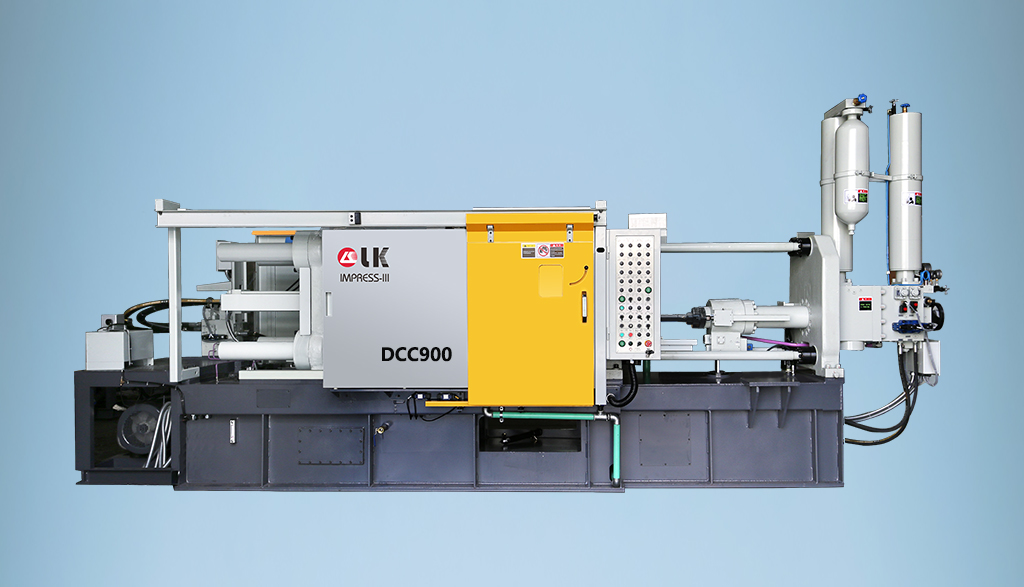
2024-09-19 14:16:15 LK Cold Chamber Die Casting Machine DCC900 Locking Force: 9000KN Die Height: 400-1000mm Space Between Tie Bars: 930x930mm Shot Weight: 13.5Kg Casting Area Max:2250c㎡
More -
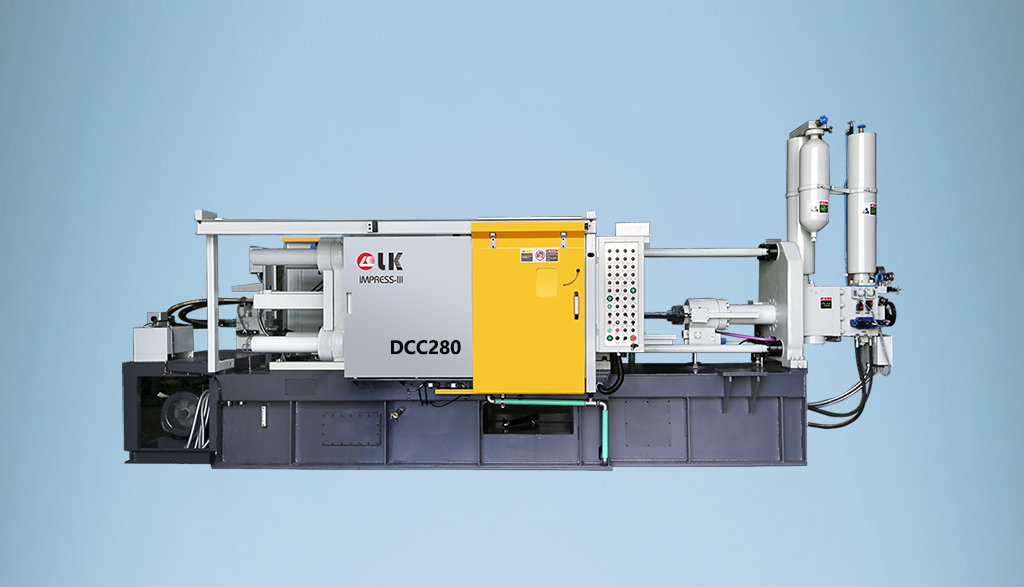
2024-09-19 14:11:06 LK Cold Chamber Die Casting Machine DCC280 Locking Force: 2800KN Die Height: 250-650mm Space Between Tie Bars: 560x560mm Shot Weight: 2.9Kg Casting Area Max:700c㎡
More -
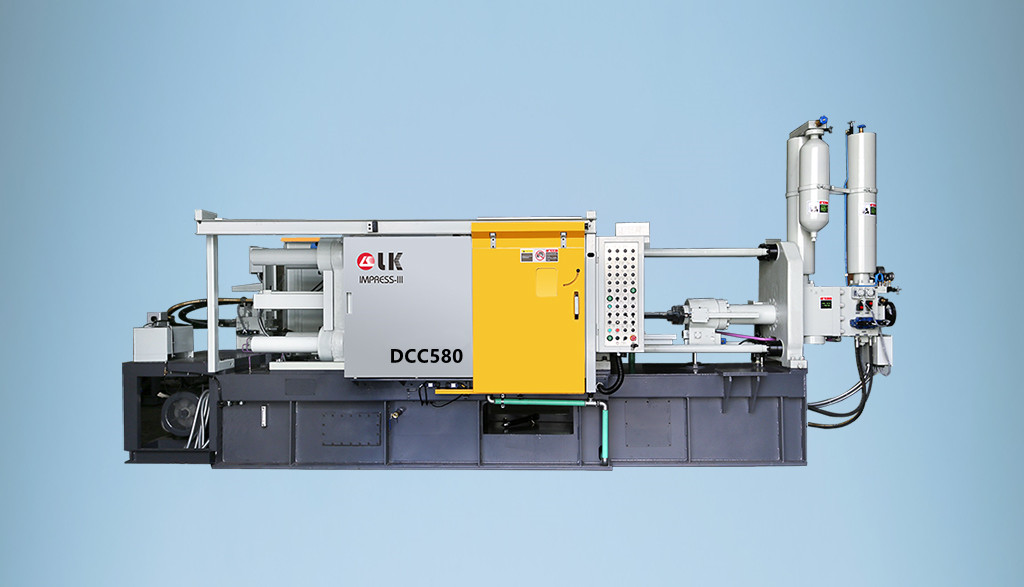
2024-09-19 10:23:07 LK Cold Chamber Die Casting Machine DCC580 Locking Force: 5000KN Die Heigh: 350-850mm Space Between Tie Bars: 760x760mm Shot Weight: 6.9Kg Casting Area Max:1250c㎡
More -
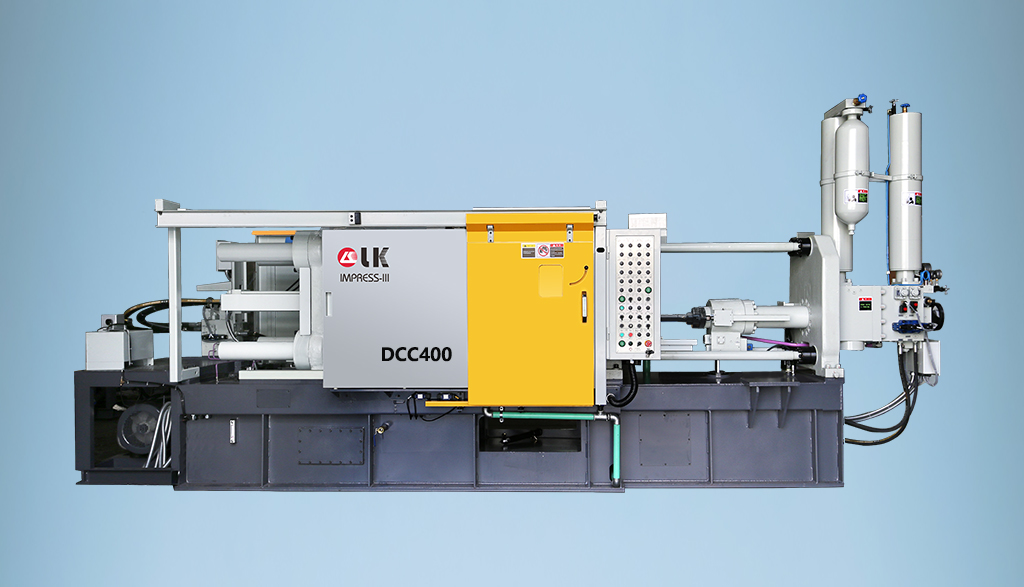
2024-09-19 10:11:20 LK Cold Chamber Die Casting Machine DCC400 Locking Force: 4000KN Die Height: 300-700mm Space Between Tie Bars: 669x669mm Shot Weight: 4.7Kg Casting Area Max:1000c㎡
More

